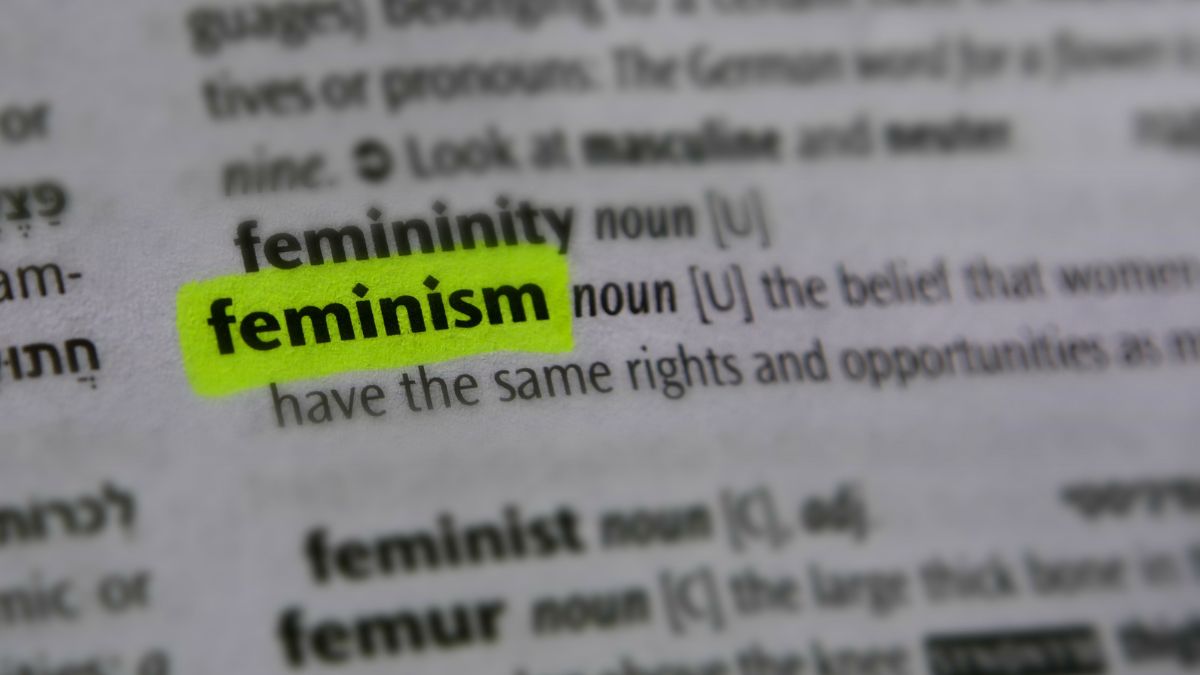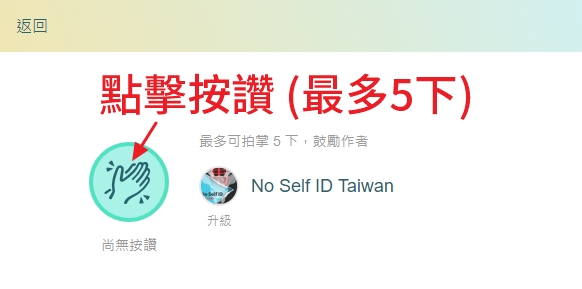
(Originally posted on Nov 22, 2022)
In November 2022, I read an article posted by the Gender Equality Workshop of Taiwan’s top 1 university—the National Taiwan University. In this article, the history of identity politics in the movement for gender equality and the deconstruction of genders are discussed. However, the more I read, the more I felt confused. The author first suggested that the concept of “woman” per se is extremely heterogeneous. Then, the author argued that because transgender women are also oppressed by patriarchy, they share the same experiences of being sexually assaulted or stigmatized as women do; namely, transgender women are women regardless of their male bodies. In the author’s conclusion, transgender women’s plight is also the focus of feminism—they are whom women should ally with.
When sexual minorities are the focus of feminism, how about women?
The waves of feminism keep developing one after another. Riding those waves, sexual minorities like LGBT+ come to public attention and ask for their structural disadvantages to be seen. Frankly speaking, sexual minorities violate the hetero-patriarchal (male-centered) disciplines according to which men and women should play specific roles and thus easily become the targets for interrogations. Are all the rebellions launched by sexual minorities to fight against those disciplines absolutely right?
Based on the feminist perspectives of patriarchy, queer theories developed from the resistance to the domination of mainstream values. In this queer movement, traditional ideas were resisted and marginalized people were embraced to celebrate the diversity in humans. At the same time, the groups included in it expanded rapidly: Sexual minorities, people of color, marginalized sexualities, and even animals and environments were considered the disadvantaged groups for which women should fight—In other words, feminists should be the savior for all.
The purpose of my analysis is not to deny the disadvantages of the identities mentioned above. Instead, I aim to ask, “Where are women in this queer movement?”
Till now, the groups celebrating “intersectionality” focus on the issues of preferred gender pronouns, outing someone of the closet or not, depression for unknown reasons, and physically advantaged men’s participation in women’s sports. Those groups carefully validate marginalized people’s feelings and accuse women of having “cis-gender privileges”. When they call women oppressors who should self-reflect, I cannot help but think, “Seriously?”
When it comes to political and economic resources, women are not oppressors at all—Let’s see the data. According to the 2021 report of Taiwan’s Ministry of Labor, male employees’ average monthly wage is 61,150 TWD with the average monthly work hour being 169.3 hours, and the average wage per hour being 361 TWD. As for female employees, the average monthly wage is 49,809 TWD with the average monthly work hour being 163.8 hours, and the average wage per hour being 304 TWD. The gender pay gap is 15.8%. In the U.S., this number is 16.9%. In Japan, it is 30.6%. In South Korea, it is 30.4%. As for political resources, 88.51% of elected officials, 81.94% of political officials, and 70% of legislators, senior officials, as well as managers in Taiwan, are male.
Probably we should also look at the clear reports of sexual violence. In 2022, 7,787 sexual assault victims have been reported to Taiwan’s police. Among this number, 6,406 victims are women. In 2019, a new gender category, “other”, was added to Taiwan’s official report. In the 2019 report, 3 victims are put in this category. For the 2020 and 2021 reports, the numbers of this category are 2. I wonder, after fully recognizing gender identity politics, would the gender gap in these data be changed? Could women be less oppressed if they openly “self-identify” as men and wear men’s clothes? Could trans-identified men instantly lose male privileges and be committed sexual violence of the same extent that women always endure by self-identifying as women and wearing women’s clothes?
The fact is that women still have to face inequality in living resources and be alerted to (at the same time, tactfully retreat from) men’s harassment even if invasion. However, the transgender rights movement considers women’s resistance to staying in the same room with men an evil “cis-gender privilege” which makes trans-identified men feel not insecure. So far this movement is not about equality for all but about one side’s overpowering.
Protective measures for women or, “cis-gender privileges”
Women are not oppressed simply because of their “feminine” roles. Rather, women are oppressed by their female bodies. Her body will be considered to have reproductive potential regardless of her will or ability. That is the center where the social norms (gender) have been built around.
For instance, the glass ceiling for women is the result of multiple causes. First, employers assume that women must prioritize family life over careers and thus cannot keep up with the work schedule or refuse to work extra hours in order to do more household chores for the family. Second, employers must provide welfare based on women’s biological functions. Compared with their men colleagues, women employees can apply for “menstrual leave” and “maternity leave”. Both two types of leave are based on the biological reality that women might be unable to work when experiencing a menstrual cycle and feeling discomfort and pain. These gender stereotypes and protective measures are one of the reasons that employers have less preference for women employees.
As for the gender stereotypes of women, female body experiences also participate. For example, why are women regarded as caretakers or “born to” have maternal instincts? Isn’t it because women can get pregnant? In other words, these gender stereotypes are also derived from women’s biological reality and further develop into the expectation and pressure for women’s fertility.
Speaking of sexual violence, most of us surely know that sexual assault is not only about sexual desire but also about the display of power as well as the abuse of weaker people. All mentioned above can be proved by the fact that the highest percentage of reported sexual violence occurs in children. Similarly, most adult victims are women. Also, the older the adult victims are, the gender ratio within the same age group becomes higher. Compared with men, women are physically more vulnerable on average. Hence, they are more likely to be selected as the victims of abuse.
When we are discussing how sexual minorities are oppressed due to their resistance to the mainstream culture, we are supposed to ask: Is it fair that letting “trans-identified men” envy women, take away women’s safe spaces, be nominated for women’s prizes, and represent for women in every sense?
Women’s alliance with the transgender movement—a collaboration or corrosion?
For liberal and postmodern feminists, allying with trans people seemed to be a decision that never became wrong. As Taiwanese, probably we should look at the regions in which transgender ideology has been adopted for many years—such as Europe and the US. Could we see those women be less oppressed after allying with trans people? Or, could we say that the trans ally cares about women?
From 2021 to 2022, Lia Thomas is a well-known name that anyone who pays attention to sports, especially swimming. During that time, this trans-identified young male successfully transferred from the male group to the female group and became eligible for all female swimming competitions. Soon, Thomas’s rank bounced from #462 as a male to #1 as a female. Not only did Thomas beat the Tokyo 2020 silver medalist but Thomas also broke several women’s swimming records.
North Carolina, US, a trans-identified male volleyball athlete spiked at a speed of 112 km/h and thus caused one female opponent to have a concussion for 2 weeks. This serious accident made the local education committee take prompt action—the team of the trans-identified male was banned from competing with the women’s volleyball teams from other schools.
Laurel Hubbard, the 43-year-old New Zealand mtf weightlifter, beat other female athletes from across Oceania and thus was able to represent New Zealand to compete with other female athletes in their 20s in the Tokyo 2020 Olympics. Looking at this age gap, could we claim that mtf athletes do not have any biological advantages? Though Hubbard lose the game because of the failure on all three attempts, Hubbard took away the opportunity to compete in the Olympic games from those regional female athletes.
When I see trans-identified male athletes shine in more and more sports whereas trans-identified female athletes stay silent, I cannot help but begin to wonder: Is it even fair for women to ally with this transgender rights movement?
Just now, a bearded male insisted that he is a “mental woman” and broke into the female hot spring of Emperor Spa in Beitou, Taipei on 10 Nov. 2022. The female ID card he showed to the staff was found out to belong to another person after the female guests called the police. Of course, this is not an isolated case. In 2018, a naked man broke into the “Nanping Public Bathroom” of the female hot spring on the Jin Mountain in New Taipei City. When asked by the female guests, that man also claimed to be a woman. In 2021, a biological man insisted on entering a female SPA as a transgender woman and provoked panic among people in Los Angeles, US. If women say yes to the concept that “a man can self-identify as a woman”, how could they say no to those men in their nudity spaces?
I am not saying that sexual minorities do not have any plights. Instead, I am saying that women cannot be “protected” if they say yes to every request from “self-declared minorities”. Apparently, by self-identifying, men can harass, invade, and exclude women from any possible opportunities. Women’s spaces, sports, and parliamentary seats will be erased. My last question is that, if a feminist must support sexual minorities by “corroding women’s rights” to fight against patriarchy, could she claim that to be fighting for feminism?




